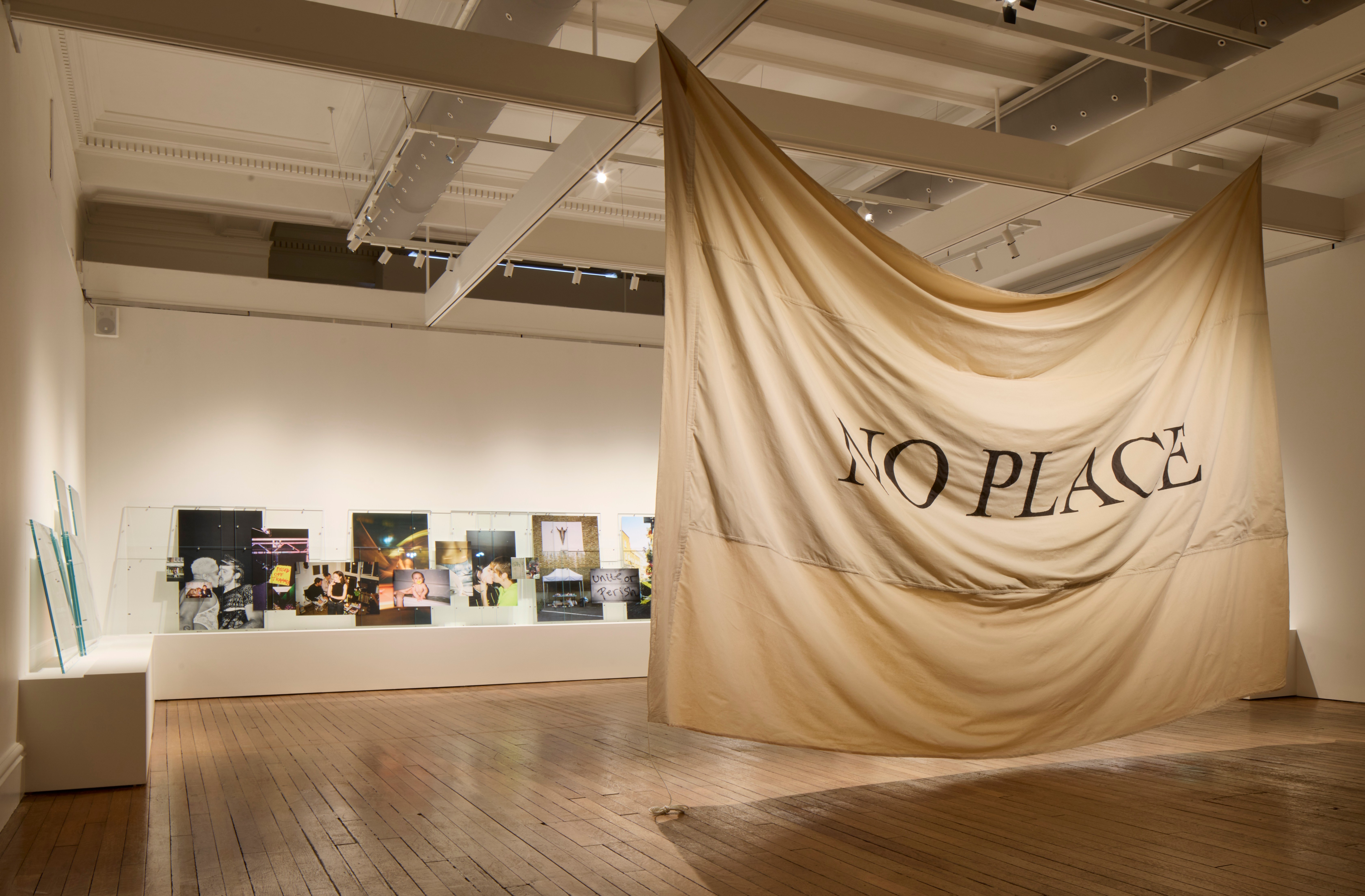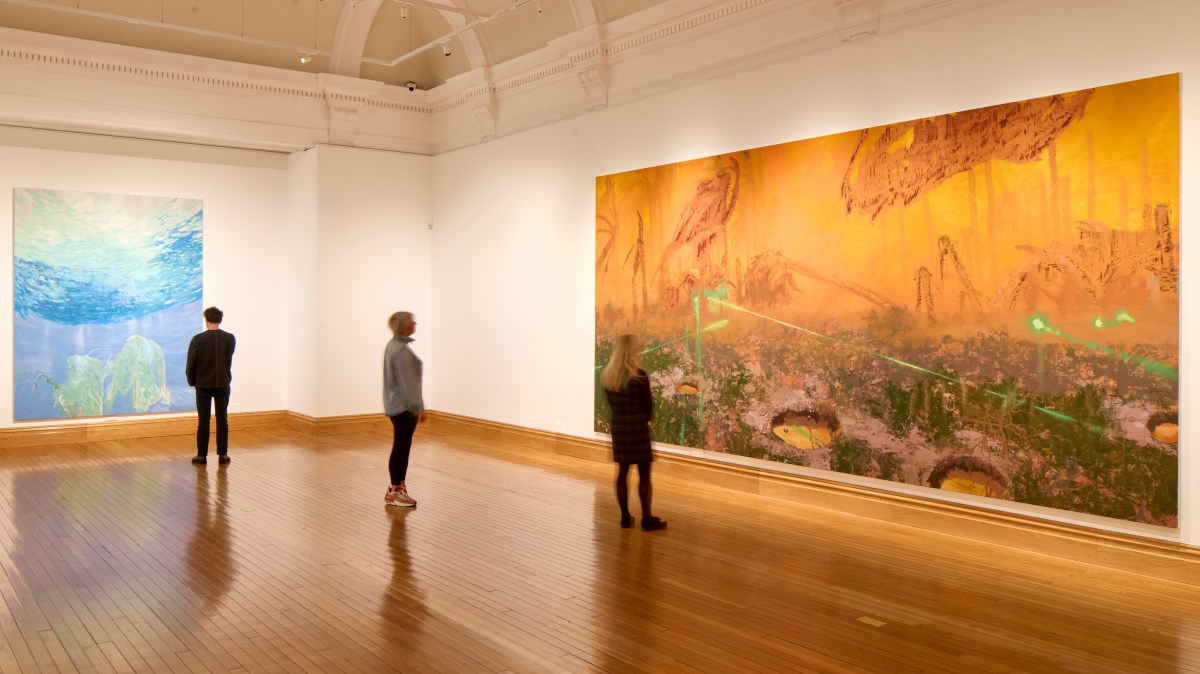Another autumn, another Turner prize exhibition, this year landing at the magnificent baroque Cartwright Hall in Bradford. The exhibition spans the civic art gallery’s two floors, with each of the four nominated artists given a single room of equal size. It’s a beautifully installed show of work by four very different artists and an intriguing snapshot of what’s going on in contemporary art.
The Korean-Canadian Zadie Xa’s floor-to-ceiling installation Moonlit Confessions Across Deep Sea Echoes: Your Ancestors Are Whales, and Earth Remembers Everything, is the most sensually alluring. A mirrored gold floor reflects vividly painted walls depicting a sun and moon in perpetual rise and fall; scenes of folk rituals and marine life are painted onto stitched linen, all of it tied together with the motif of the conch.

Moonlit Confessions Across Deep Sea Echoes: Your Ancestors Are Whales, and Earth Remembers Everything, by Zadie Xa
DAVID LEVENE
A central chandelier of brass bells and bamboo string forms the shape of one, and four large shells containing speakers emit a soundscape that includes a frankly horrifying passage from the sci-fi doyenne Ursula K Le Guin’s The Ones Who Walk Away from Omelas.
Apparently it is an invitation to consider the state of the oceans and what their inhabitants might say to us. But, for me, the chilling audio speaks to the horrors of contemporary conflicts and our own sense of paralysis about them. Intentional or not, it’s effective.
• Read more art reviews, guides and interviews
Also timely is the Peterborough-born Rene Matic’s presentation, which explores political duplicity with a vast white flag bearing the legend NO PLACE on one side and FOR VIOLENCE on the other, quoting American senators in the days after last year’s assassination attempt on Donald Trump.

Rene Matic’s NO PLACE flag
DAVID LEVENE

Feelings Wheel, by Rene Matic
DAVID LEVENE
The contradictions are obvious. Matic contrasts this with works looking at care and humanity: a photographic installation, Feelings Wheel, and a sound piece, 365, pay tribute to protest (a chant of “free Palestine” that broke out in 2023 among Tube commuters features alongside bell ringers and Rihanna’s Lift Me Up) and queer visibility as unifying forces. It’s very heart-on-sleeve but gives us plenty to think about.
Nnena Kalu, from Glasgow, is the first learning-disabled artist to be nominated for the Turner, though this is only acknowledged five minutes into a seven-minute introductory film that most visitors won’t watch.

Sculptures by Nnena Kalu
DAVID LEVENE
I’d argue that her non-art school approach gives valid context to the work, a vigorous expression of an urgent need to create, and makes sense of the intensity of her drawings and sculptures, which are created by wrapping streams of fabric, rope, clingfilm, paper and VHS tape around a solid structure. I understand the impulse to avoid filtering her work only through that lens but by not having any real explanation in the wall text (the other artists get a bit), curators do it a disservice.
• What next for the Turner prize, the ‘rotting corpse’ of art world?
Traditionalists may breathe a sigh of relief on entering the room occupied by the Baghdad-born painter Mohammed Sami. Memory and conflict are his subjects — the unreliable, fragmentary nature of the former and the causes and effects of the latter. Evocative, allusive and fantastically well executed, these are stunning works that reward lengthy contemplation.

The Grinder, by Mohammed Sami
DAVID LEVENE
Unusually this year, all four artists appear to be at similar points in their careers, which is exactly as I think the Turner should be. Sami would be my choice for the prize — but as ever in this annual comparison of apples and oranges, I look forward to being wrong.
★★★★☆
Cartwright Hall, Bradford, Sep 27 to Feb 22, bradfordmuseums.org

